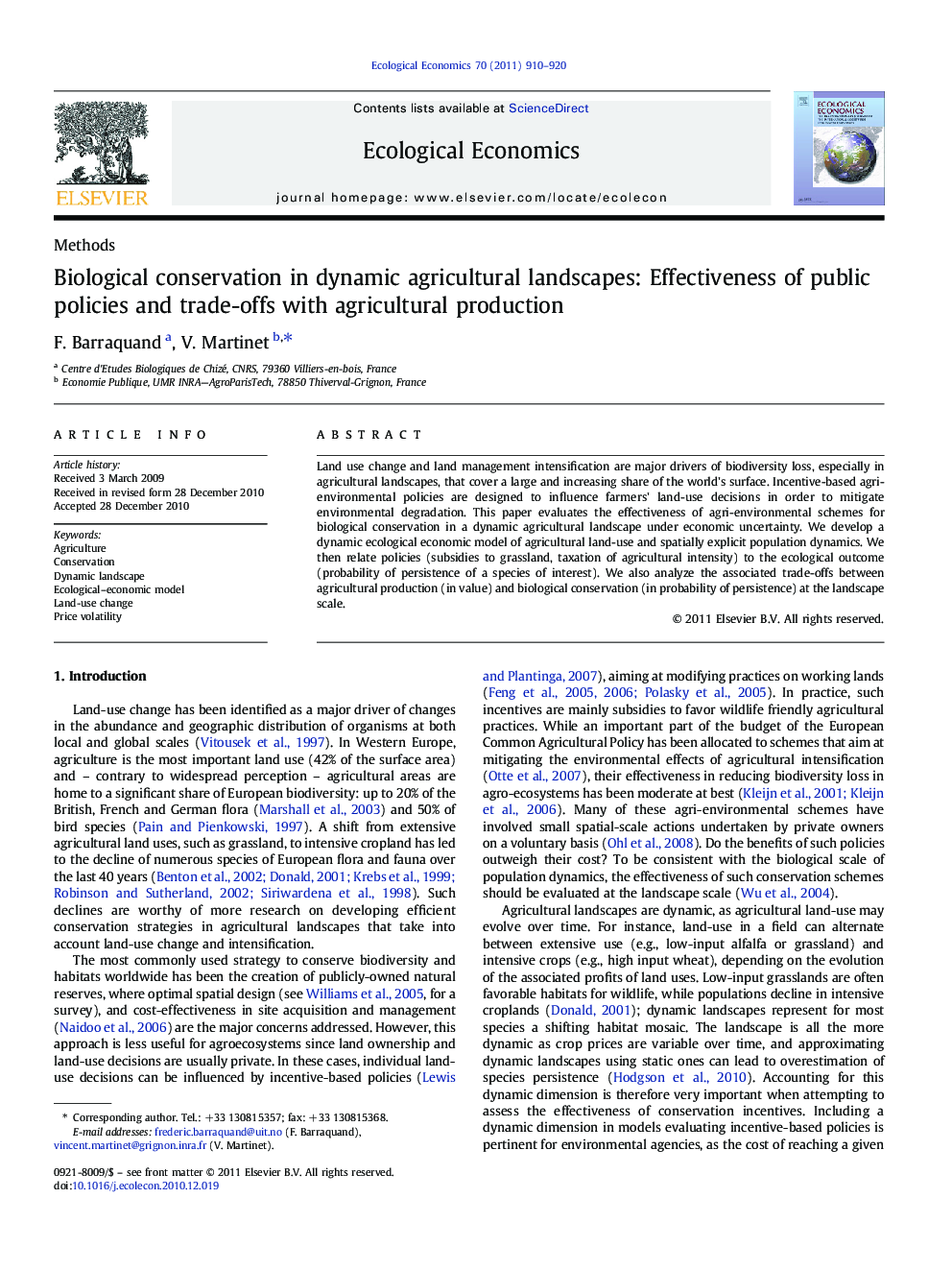| Article ID | Journal | Published Year | Pages | File Type |
|---|---|---|---|---|
| 5050664 | Ecological Economics | 2011 | 11 Pages |
Land use change and land management intensification are major drivers of biodiversity loss, especially in agricultural landscapes, that cover a large and increasing share of the world's surface. Incentive-based agri-environmental policies are designed to influence farmers' land-use decisions in order to mitigate environmental degradation. This paper evaluates the effectiveness of agri-environmental schemes for biological conservation in a dynamic agricultural landscape under economic uncertainty. We develop a dynamic ecological economic model of agricultural land-use and spatially explicit population dynamics. We then relate policies (subsidies to grassland, taxation of agricultural intensity) to the ecological outcome (probability of persistence of a species of interest). We also analyze the associated trade-offs between agricultural production (in value) and biological conservation (in probability of persistence) at the landscape scale.
Research Highlights⺠We develop a dynamic ecological-economic model of agricultural land-use. ⺠We exhibit the trade-offs between probability of persistence and agricultural output. ⺠We study the effectiveness of agri-environmental schemes for biological conservation. ⺠Improving conservation does not require to reduce economic outcomes too much. ⺠Input taxation to reduce intensity is a substitute for subsidy to favorable habitat.
